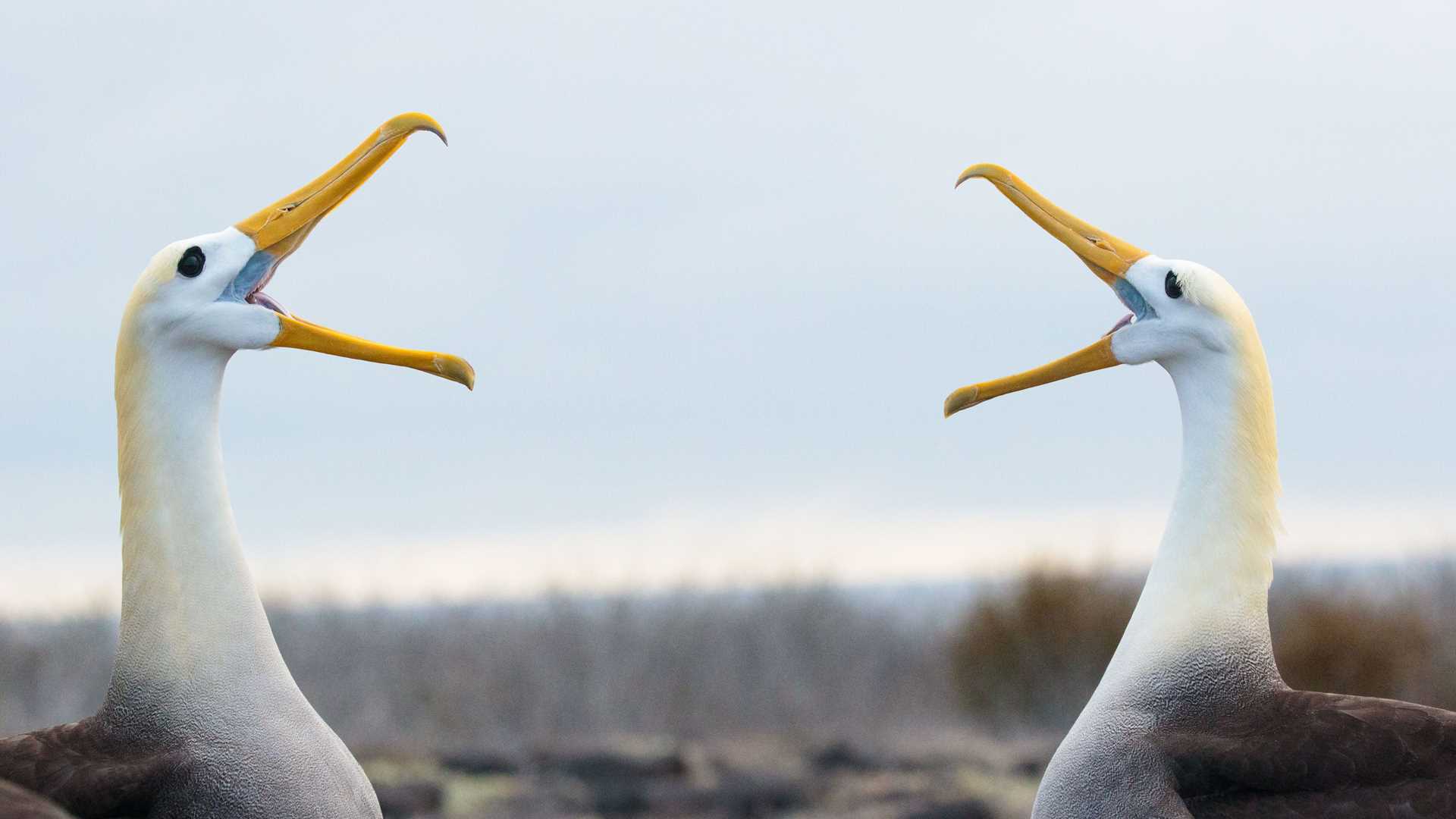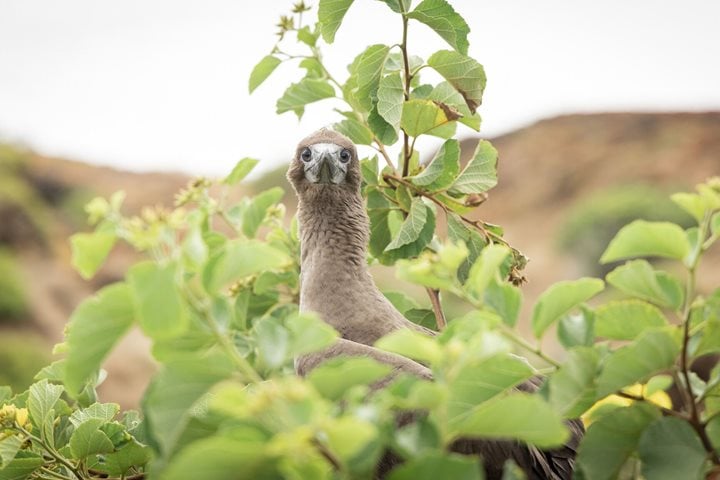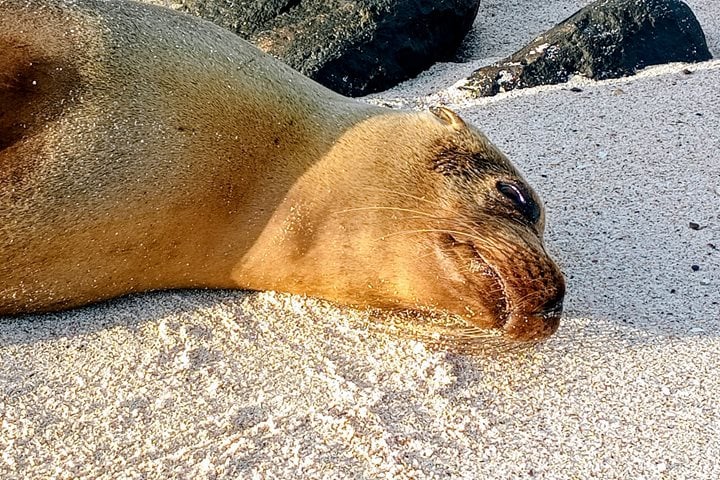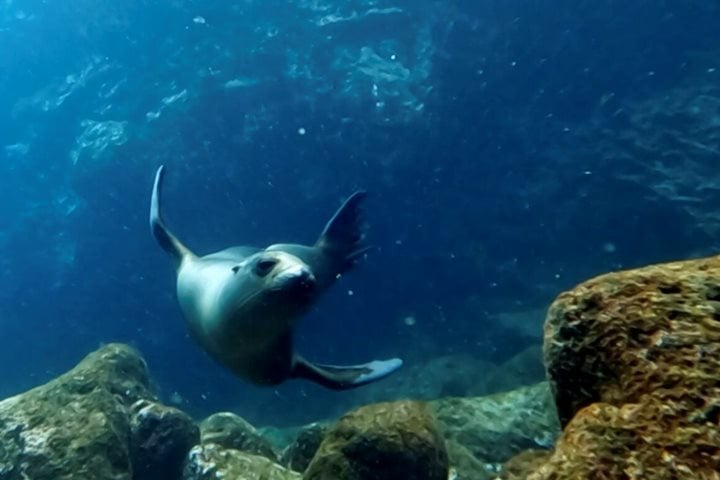We woke up to a wonderful view of a white sandy beach in the distance and a vast incense tree forest covering the lowlands of Espanola. Some of us early birds went on a pre-breakfast kayaking outing along the coast of Gardner Bay. After breakfast, we went deep water snorkeling around Gardner Islet. This was an incredible opportunity to swim with Galapagos sea lions all around us; they were playful, curious about us, and very friendly.
After deep water snorkeling, we had the opportunity to go to a white sandy beach. We took walks to explore and observed a small colony of sea lions and resting sites for marine iguanas, and we went swimming. Espanola is definitely one of the oldest islands in the archipelago with interesting geology and some species that are unique to this island, such as the Espanola mockingbird and the Espanola lava lizard. The island even has its own species of racer snake.
After lunch, we had an incredible talk on the oceanographic conditions of the Galapagos. National Geographic Islander pulled anchor and repositioned to a different visitor site called Punta Suarez. Once we dropped anchor, we got ready for a dry landing on Punta Suarez. This visitor site welcomed us with a large colony of marine iguanas resting right in the middle of the trail. We saw lava lizards and sea lion pups everywhere. We were extremely lucky to spot a newborn sea lion with its mother right at the place of birth (we could see the afterbirth still around).
We walked farther into the island and spotted several of the endemic waved albatrosses; some of them even performed their courtship dance a few feet away and gave us an incredible show. As we were photographing these albatrosses, we spotted a couple of humpback whales breaching off the coast of the landing site, a mother and calf. These two humpbacks really gave us a great opportunity to see them from every angle. This was a very unexpected but lucky sighting!
Along the trail, we also encountered several blue-footed boobies with their chicks, red-billed tropicbirds, Nazca boobies, and lava herons. Espanola is full of life wherever you walk and as far as you can see.
This island is truly one of the jewels in the crown, and we could not have asked for a better day than today in the Galapagos!







